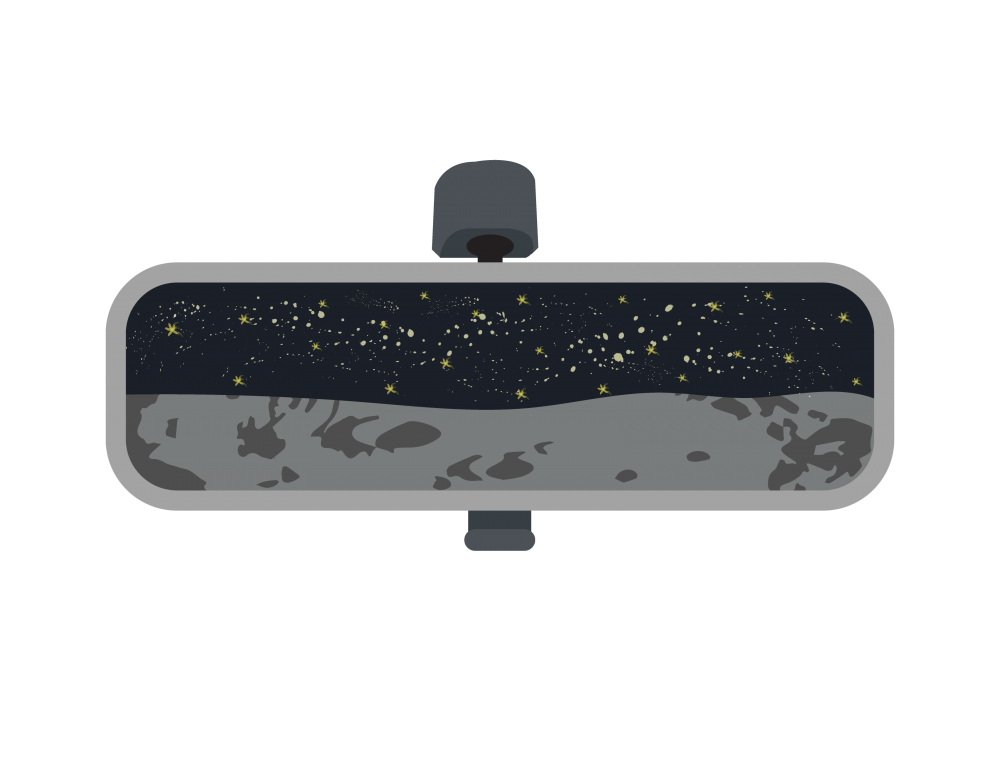Physics and Folly applies real world science to familiar and fantastic situations. Discover the answers no one has heard, to the questions no one ever asked.

The year is 3000 A.D. Humanity has colonized the moon, making it a fun place to take the kids on the weekends. Aside from the massive problem of installing a breathable atmosphere on the moon, and taking care of the inevitable wind storms that would form between the hot sunlit and cold dark sides of the moon, there are certain smaller aspects of life on the moon that would be surprisingly hard to get used to. Transportation is a challenging enough problem on Earth; how would getting around on the moon work?
Transportation may not be as straightforward as it might seem because the gravity on the moon, as is commonly known, is about one-sixth of Earth’s own. This is the same reason why the moon would be a great place to take the kids; or to take literally anyone who knows what fun is. The low-gravity environment would allow us regular humans to literally run on water (so long as we were wearing snowshoe-like shoes), or to jump over 10 feet in the air with about four seconds of air time. We could even run around a loop-the-loop 30 feet in diameter.
So, if acrobatic stunts are so easy, why then is transportation an issue? I’ll present a simple, relatable example. Imagine you’re on Earth running down a hotel hallway at a good clip of about 10 km/h, pushing five of your friends on a hotel dolly. Twenty feet down the hall a guest opens his outward-facing hotel door; you immediately lean back, and start dragging your feet along the carpet, trying to slow down your friend-filled battering ram — but there’s just too much momentum.
The collision happens as if in slow motion, taking nearly four seconds to reach its inevitable conclusion with you and your friends colliding into the door. Now imagine it takes this long to stop all the time. On the moon your body would have six times as much momentum relative to the gravity, so just running down the street, it would take you a little over 20 feet to come to a full stop, the same as our Earthbound hotel hooligans. Actually, as a side note, avoiding a person or a door on the moon (so long as you are outdoors) wouldn’t be much of a problem, since you could simply jump over your obstacle and carry on your way.
Cars, on the hand, are not very good at jumping, and they too would have trouble with stopping. The physics of the situation tells us six times less gravity means a six times longer stopping distance, so even at a moderate 50 km/h, it would take over 80 metres to come to a full stop — and that’s slamming on the brakes. At highway speeds, it would take nearly half a kilometre to slow to a stop.
My solution to cars is fitting, considering the futuristic setting: flying cars — ahem, sorry — airplanes. Since we’ve got an Earth-like atmosphere with low gravity, planes would be extremely efficient, and easier to handle than on Earth. In fact, a pedal-powered plane on the moon would take about as much effort to fly as briskly walking takes on Earth, and it would travel at about 15 km/h. That’s all well and good, but we can do better — putting solar panels on a personal-sized plane would allow for car-like speeds, and the three dimensions of travel means traffic would be much easier to accommodate. Stopping wouldn’t even be a problem; airplane engines can reverse thrust, meaning we don’t even need to rely on gravity to slow ourselves down.
Truly, a colonized moon could look as predicted by historical visionaries and sci-fi authors of the past. It would be so cool.
Image: Simer Haer/The Cascade


